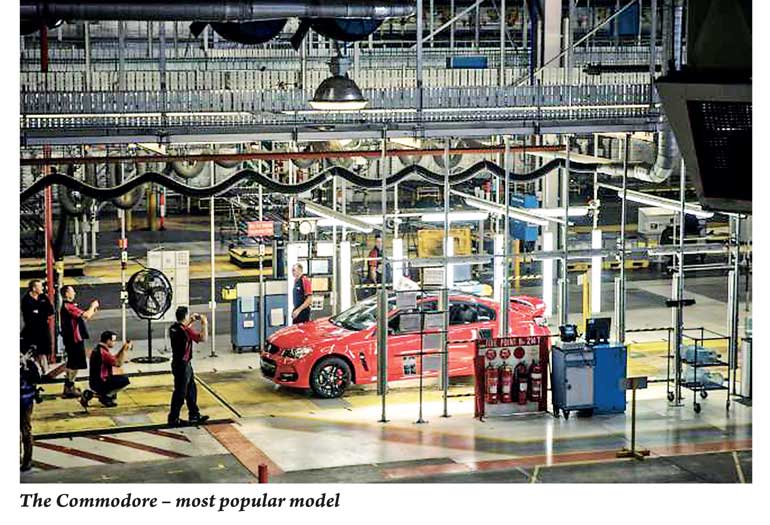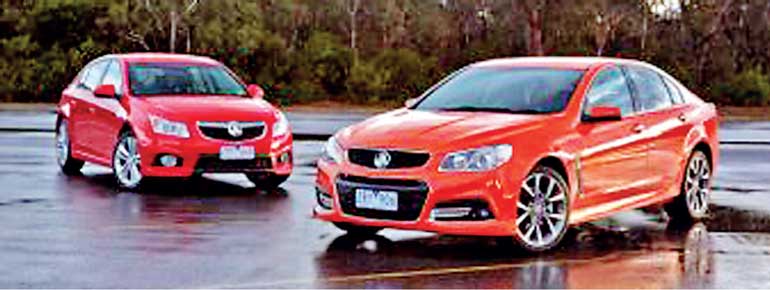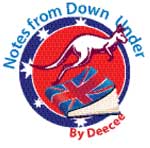Monday Dec 08, 2025
Monday Dec 08, 2025
Saturday, 28 October 2017 00:00 - - {{hitsCtrl.values.hits}}

 It was an emotional moment for the employees at the Holden car plant in Adelaide to watch the last car coming out of the assembly line. As the red Holden Commodore, the most popular model, was driven out a week ago employees took photographs recording the historic event for posterity. That marked the closure of the one -time flagship brand of Australia for good.
It was an emotional moment for the employees at the Holden car plant in Adelaide to watch the last car coming out of the assembly line. As the red Holden Commodore, the most popular model, was driven out a week ago employees took photographs recording the historic event for posterity. That marked the closure of the one -time flagship brand of Australia for good.
“I feel very sad as we all do, it’s the end of an era, you can’t get away from the emotional response to the closure,” Australian Prime Minister Malcolm Turnbull said.
The occasion was marked by more than a thousand Holden fans pulling up outside the factory, many driving some of the manufacturer’s most iconic models. It was how satisfied customers were paying tribute to the service provided by the company for seven decades.
Holden chief Mike Devereux was quoted by the media as saying that Australia’s automotive industry was up against a perfect storm of negative influences, including the sustained strength of the Aussie dollar against almost all major trading currencies, the relatively high cost of production and the relatively small scale of the local domestic market.
The intention of closing down the Holden factory was announced four years ago. Since then employees had been looking for other jobs and many had already left by the time the factory closed. The company announced that 85% of its workers have successfully transitioned to new occupations, study or retirement. According to the company, 75% of its workers had secured new jobs.
 It was indeed the end of an era for the motor industry in Australia. The first Holden was driven out of the factory 69 years ago. Over the years the picture changed, particularly with the inflow of Japanese vehicles backed with aggressive public awareness campaigns. Japanese manufacturer Toyota set up a plant in Australia and the brand made headway and beat Holden as the best seeling brand.
It was indeed the end of an era for the motor industry in Australia. The first Holden was driven out of the factory 69 years ago. Over the years the picture changed, particularly with the inflow of Japanese vehicles backed with aggressive public awareness campaigns. Japanese manufacturer Toyota set up a plant in Australia and the brand made headway and beat Holden as the best seeling brand.
The Holden story dates back to over a century to prior the manufacture of the first Holden car when James Alexander Holden started a business to make saddles and other leather products in Adelaide, South Australia. Later the firm started repairing car upholstery and progressed to the full-scale production of vehicle body shells becoming the exclusive supplier of American car manufacturer General Motors in Australia by 1924.
In 1931, the two companies merged to become General Motors-Holden’s Limited (GM-H). During the war years, Holden’s car production was diverted to the construction of vehicle bodies, weapons, aircraft and engines. After the war, Holden returned to producing vehicle bodies for several car brands including Buick, Chevrolet and Vauxhall.
In 1948, the company finally achieved its long-term goal of manufacturing the first all-Australian motor vehicle. Australia had a car of her own to be marketed. During the 1950s, Holden dominated the Australian car market with steady production of the utility and sedan models.
By 1958 sales accounted for over 40% of total car sales in Australia.
By the early 1960s, Holden was exporting cars to Africa, the Middle East, South-East Asia, the Pacific Islands, and the Caribbean. When the Australian Government gifted Holden cars for use at the Fifth Non-Aligned Summit held in Colombo in 1976, the brand was well known in Sri Lanka.
By 1962, Holden had sold a million vehicles. An additional million were sold over the next six years. In 1964, Holden employee numbers peaked at 23,914 across seven facilities in Queensland, NSW, Victoria and South Australia.
The turn of the century began to show a declining trend in the Holden’s market share which fell to 15.2 percent in 2006. By then Holden had started exporting vehicles to Korea, China and Mexico.
Toyota soon overtook Holden as top-selling brand, a position it has held ever since. Meanwhile, Holden continued to manufacture motor vehicles in Australia as a subsidiary of General Motors, as well as exporting vehicles and engines to other countries.
Realising the downward trends in the business it was decided to wind up operations.